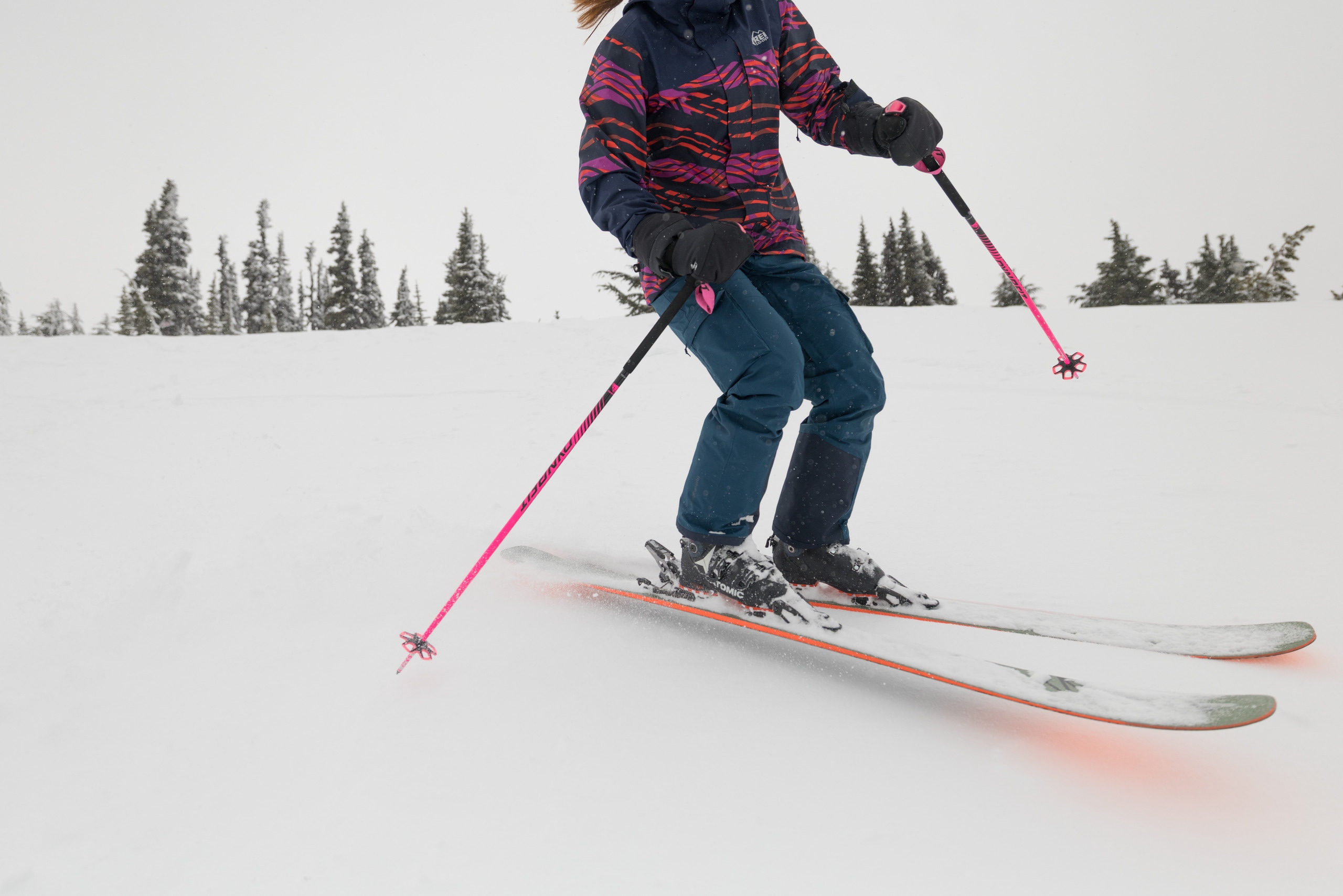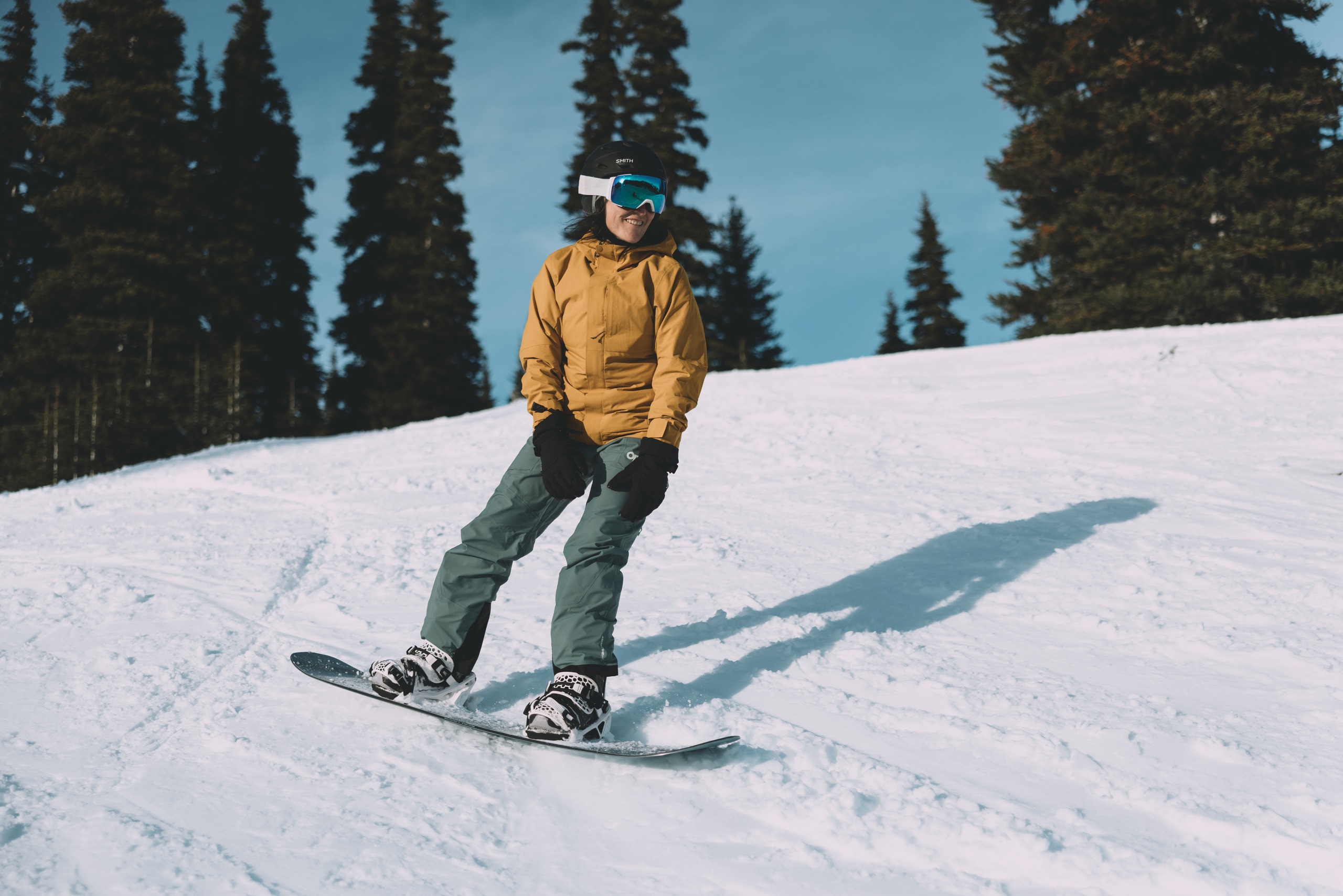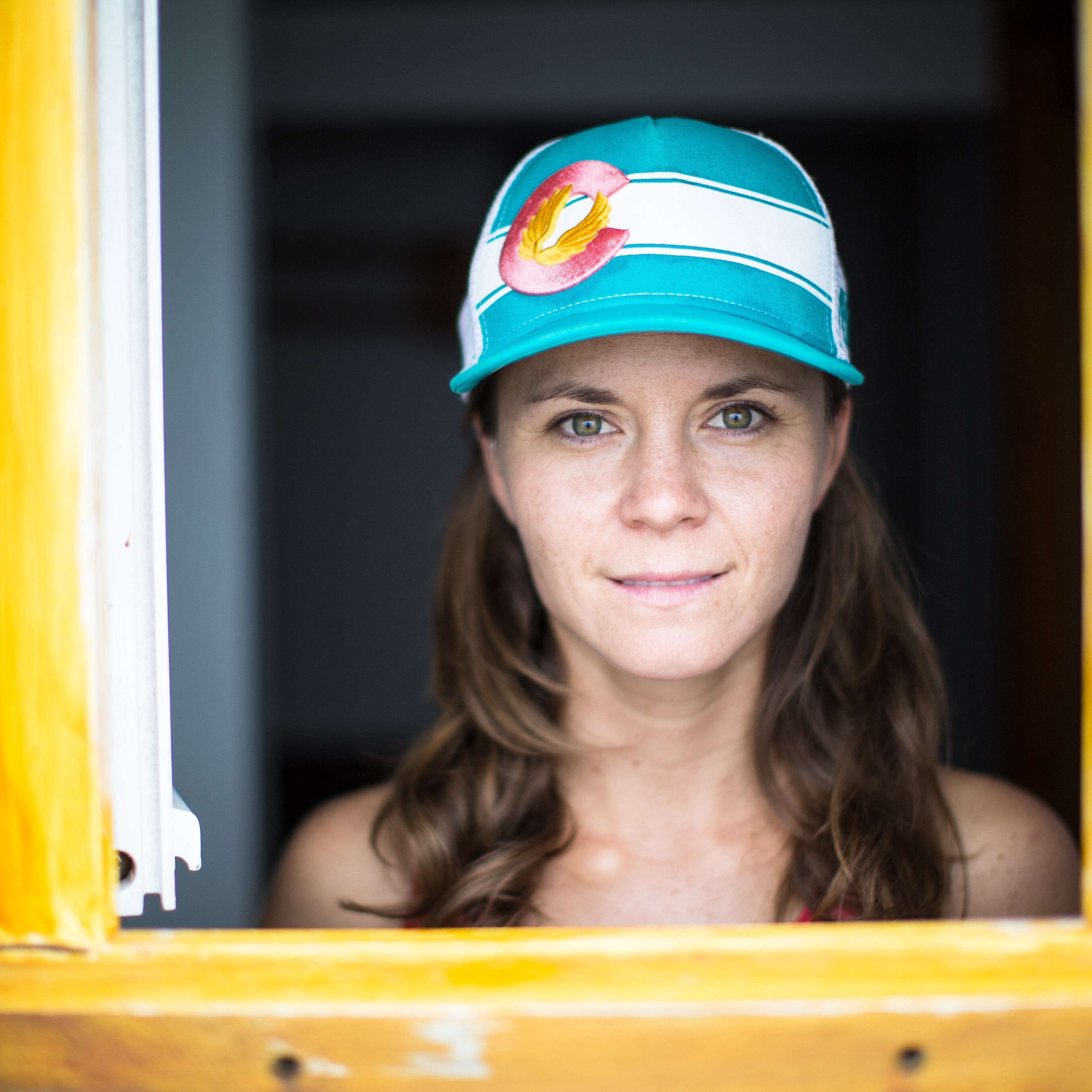A quality jacket is essential to every ski or snowboard kit. Busted zippers and leaky seams can ruin the most splendid powder days, leaving you cold and soggy. It’s also important to choose an outer layer that meets your needs. If you’re a backcountry skier or snowboarder, for example, you’ll likely be reaching for a breathable, lightweight shell that can accommodate layers for working up a sweat and gliding downhill. If you ride at the resort, you may opt for an insulated jacket to keep you toasty warm on chilly chairlift rides.
Men’s and women’s ski and snowboard jackets typically offer the same performance technology and features. Some women’s gear may be designed to be slightly wider in the chest or may be longer. No matter your gender identity, you should select what fits you and your style. You might opt for a men’s ski jacket if you want a different colorway or a roomier fit, for instance. (If that sounds like you, read our staff recommendations for the best ski jackets in men's sizing.)
To come up with the best ski jackets for women, we asked REI members and staff for their recommendations for riding the resort, backcountry and beyond. Find your next favorite jacket among these top picks available at the co-op, below.
Staff Picks
Find our quick recommendations here or read on for the full breakdown of our favorite ski jackets.
- Best All-Around Ski and Snowboard Jacket: Arc'teryx Sentinel Jacket
- Best Insulated Ski and Snowboard Jacket: Helly Hansen Alphelia LIFALOFT Insulated Jacket
- Best Value Ski and Snowboard Jacket: REI Co-op Powderbound Insulated Jacket
- Best Jacket for Resort Skiing and Snowboarding: REI Co-op First Chair GTX Jacket
- Best Ski and Snowboard Jacket for the Backcountry: Outdoor Research Hemispheres II Jacket
- Best 3-in-1 Ski and Snowboard Jacket: The North Face ThermoBall Eco Snow Triclimate 3-in-1 Jacket
- Best Ski and Snowboard Jacket with Sustainable Features: Picture Organic Seen Insulated Jacket
Best All-Around Ski and Snowboard Jacket
Arc'teryx Sentinel Jacket - Women's
Waterproofing 3L GORE-TEX ePE Gen 2
Insulation None
Notable Features Under-arm zippers; helmet-compatible hood; integrated powder skirt
Weight 1 lb. 5.3 oz.
One jacket to rule them all. That's the idea behind the Arc'teryx Sentinel Jacket, our favorite thanks to its all-around versatility, durability and timeless design. Instead of using proprietary fabrics, Arc'teryx opted to partner with GORE-TEX for its three-layer, tightly woven nylon shell. This most recent version of the Sentinel uses a lightweight durable fabric (GORE-TEX ePE) that is PFAS-free. End result: decent breathability and stellar weather protection. "This is my go-to shell for backcountry days when it's blitzing, and I've never had it wet out," reported one member of our testing crew who lives in Colorado and logs more than 50 snow days per season.
Arc'teryx recently redesigned the fit of their women's line, ditching the old form models that relied on antiquated body structures with narrow waists and wider hips. Now, the Sentinel's revised styling has less of an hourglass shape, although it's still trimmer than many freeride-style jackets. And it packs plenty of features to make resort and backcountry powderhounds happy: pit zips to dump heat in a hurry, a hood that fits over a helmet, and accessible pockets (even when you're wearing a backpack). Important to note is that it's not insulated, so you'll definitely need a mid layer to stay cozy. (For built-in warmth, consider the Sentinel Insulated Jacket.)And buy once; cry once: The Sentinel is the most expensive jacket in our lineup, but the brand's noted durability means that it'll last you through plenty of seasons—and many years to come. Buy here.
Best Insulated Ski and Snowboard Jacket
Helly Hansen Alphelia LIFALOFT Insulated Jacket - Women's
Waterproofing HELLY TECH Performance waterproof/breathable fabric
Insulation 70% polypropylene/30% polyester
Notable Features Under-arm zippers; helmet-compatible hood; detachable powder skirt; wrist gaiters with thumbholes; RECCO reflector
Weight 2 lbs. 1 oz.
Skiing and snowboarding can feel like a magical experience. There’s the crunch of fresh snow under your skis or board and the way the sky turns a shade of a periwinkle blue when the clouds clear. It can also be downright frigid, with chilly chairlift rides and whipping winds at the summit. That’s why we’re reaching for the Helly Hansen Alphelia LIFALOFT Insulated Jacket when riding in cold climates this winter.
The jacket’s four-way stretch fabric and articulated fit moves with you, even as it’s lined with a proprietary synthetic insulation that’s lightweight yet super warm. It clocks in at less than 2 pounds, which is notable for a jacket this toasty. That combined with a waterproof, breathable and fully seam-sealed exterior that’s been treated with a PFC-free durable water repellent means that you’ll rejoice rather than retreat when the snow starts flying.
One happy customer reported having recently traveled to Canada where temperatures were below zero. “This jacket was perfect for layering,” they wrote. “I ordered a medium (I’m 5’6” and 125 pounds) and I had plenty of room for several thin layers under the jacket and was perfectly comfortable." Another reviewer appreciated the warmth, saying "I’m always cold, and I think this jacket does a good job for what I need it for." We love the Alphelia for riding at the resort or teaching kids to ski, thanks to convenient features like a detachable, helmet-compatible hood; a powder skirt for keeping snow out of your kit; a well–placed ski pass pocket; and an interior goggle pocket and shammy for clearing your specs. Buy here.
Best Value Ski and Snowboard Jacket
REI Co-op Powderbound Insulated Jacket - Women's
Waterproofing Peak 2-layer waterproof/breathable laminate
Insulation Body
Notable Features Under-arm zippers; helmet-compatible hood; powder skirt; media port
Weight 1 lb. 10 oz.
Skiing and snowboarding cost a lot, so why not save some dolla dolla bills on your jacket? The Powderbound is the most affordable jacket on this list, but that doesn't mean that REI scrimped on the details. Co-op designers packed more than 80 grams of insulation in the trunk of the jacket and 60 grams in the arms and used bluesign®-approved nylon that's waterproof and windproof to keep you warm and dry. A powder skirt and drawcord hem ensure that the snow stays out. Final math: You can save even more money on your other layers because you won't need many. "Used this for a week in Iceland in February and I'm blown away by how warm it kept me," reported one customer reviewer.
Ample pockets make it easy to stash and nosh on pocket burritos on the chairlift, and our crew really loved the drop-in goggle pouch inside the right zippered pocket. Just like the First Chair, the Powderbound makes it easier for more bodies to shred the gnar; it's offered in sizes ranging from XS to 3X. Tradeoff: The Powderbound doesn't have waterproof zippers, so super-wet conditions could cause leakage. Still, for most ski conditions, this value-bound jacket is a no-brainer. Buy here.

Best Shell Jacket for Resort Skiing and Snowboarding
REI Co-op First Chair GTX Jacket - Women's
Waterproofing 2-layer GORE-TEX ePE waterproof/breathable laminate
Insulation None
Notable Features Under-arm zippers; helmet-compatible hood; powder skirt; media pocket with cord port
Weight 1 lb. 8 oz.
Lift tickets aren't cheap, so it's nice when we find a technical and affordable piece that will keep us toasty on resort days. The First Chair GTX Jacket from REI Co-op hits the mark with a two-layer GORE-TEX fabric that repels the worst of Mother Nature. And it's easier to find one that fits, as the First Chair is offered in sizes from XS to 3X.
The features are boast-worthy too. Our favorite: a soft and fuzzy lining on the chin and inside the pockets for a cozy respite. Ski hoarders will love the pockets too, including the pass pocket, a drop-in goggle pocket and a media port. The First Chair has a loose fit to accommodate an insulating layer underneath, but don't size up too much—it's pretty relaxed on its own. "I have broad shoulders and I thought the fit was roomy enough for plenty of layers underneath (which is needed since this is just a shell)," writes one customer-reviewer. For this season, REI also updated the First Chair with new GORE-TEX ePE technology, a waterproof, breathable membrane with nonfluorinated durable water repellent (DWR) treatment. According to GORE-TEX, it also requires less energy to manufacture, consumes fewer resources and produces less carbon than traditional forms of GORE-TEX used in the past. Buy here.
Best Ski and Snowboard Jacket for the Backcountry
Outdoor Research SkyTour AscentShell Jacket - Women's
Waterproofing AscentShell Air 3-layer waterproof/breathable membrane
Insulation None
Notable Features Large internal stash pocket; pit zips; helmet-compatible hood; tricot chin guard
Weight 1 lb. 3 oz.
The perfect day combines a little bit of sweating and a little bit of schussing, in our humble opinion. But windproof, waterproof performance fabrics designed for backcountry skiing or snowboarding can feel rigid. Not so with the Outdoor Research SkyTour AscentShell Jacket, which features a highly waterproof, windproof, breathable exterior that’s simultaneously lightweight and flexible. The secret sauce is in the brand’s manufacturing process, which uses electrospinning to weave a web of tiny fibers that let sweat escape while blocking liquid water droplets from entering.
Other perks for ski tourers and split-boarders include fully sealed seams, generous pit zips to release heat, and three-layer construction that glides easily over mid layers, which you'll need because this shell isn't built for warmth.
More than one member of the REI editorial team has their eye on this jacket, noting in particular the jacket’s movement-mirroring stretch, thanks to fabric that includes 7% spandex. We also like the slight droptail hem (it’s 31.5 inches in the rear), ample pocketing (including an interior zippered chest pocket with media port and a dedicated ski pass pocket for use in resorts) and the fact that it’s the lightest jacket in our roundup, weighing roughly the same as a block of butter. Buy here.
Best 3-in-1 Ski Jacket
The North Face ThermoBall Snow Triclimate 3-in-1 Jacket- Women's
Waterproofing 2-layer DryVent waterproof/breathable shell
Insulation Synthetic
Notable Features Under-arm zippers; helmet-compatible hood; powder skirt; zip-in inner jacket
If you want to do a lot with a single jacket, reach for the versatility found in the ThermoBall Snow Triclimate 3-in-1 Jacket. With an insulated inner jacket that zips into the outer shell, this shapeshifter gives you three options: Wear the inner puffy alone, wear the outer shell alone or zip them together for a warm, weatherproof ski jacket that deflects the worst of Mother Nature. "I love this layering system," says one REI employee. When the entire jacket is paired together, it's arguably too warm for some skiers—keep this in mind if you're a portable sauna. "The thermoball down filling is warmer than down, yet lightweight. There is amazing quality of materials, construction and attention to detail that makes this jacket a cut above," reported another customer-reviewer.
The ThermoBall isn't a one-trick pony, though. It still has plenty of other features that make skiers happy. Tons of pockets—many with zippers—give you ample room to stash snacks for the chairlift, and under-arm zippers help with ventilation. Tradeoff: 3-in-1 jackets aren't known for their breathability, so you'll probably still sweat. Buy here.
Best Ski and Snowboard Jacket With Sustainable Features
Picture Organic Clothing Seen Insulated Jacket - Women's
Waterproofing 2-layer Dryplay 20,000 mm/20,000 g waterproof/breathable technology
Insulation Recycled synthetic
Notable Features Under-arm zippers; helmet-compatible hood; powder skirt; goggle cleaner
Weight 2 lbs. 3 oz.
See you later, fossil fuels. The team of designers with Picture Organic Clothing wanted to lessen the brand's reliance on polyester derived from petroleum. The latest iteration of the Seen jacket uses circular polyester, which involves collecting and recycling used clothing made of 100% polyester and then adding to it fabric scraps from the manufacturing process. The result: Circular polyester made from about 60% fabric scraps and 40% used clothing.
The Seen performs, too. The jacket is packed with 60 grams of insulation in the body and sleeves and another 40 grams in the hood, giving you an all-around feeling of warmth. Picture Organic uses a PFC-free waterproofing treatment, so there are no "forever chemicals" (known as PFAS) to worry about. And it still holds up in the nastiest of weather, as one Alaskan co-op member discovered during a brutal ski day at Alyeska Resort when the snow just wouldn't stop coming. Fit note: The Seen has a trim fit that may feel snug for some skiers. Definitely look at the sizing chart to match your measurements; if you're between sizes, go up. Buy here.
Shop All Ski and Snowboard Jackets
Buying Advice for Women's Ski Jackets
Before buying a new ski jacket, consider how you plan to use it and what types of features you'll routinely use.
What's the difference between a ski Jacket and a regular jacket?
The difference between a ski jacket and a regular jacket or winter coat is that ski and snowboard jackets are typically waterproof or water resistant, breathable and insulated, with convenient pockets and other snow-specific features. A waterproof, breathable rain jacket over your fleece or wool top might be sufficient as well.
Some winter coats (also known as parkas) tend to be long and therefore not geared toward skiing and snowboarding. Some, though not all, parkas are also made with less weather-resistant materials with an eye toward style as opposed to performance.
Warmth versus breathability
You might be wonder whether your ski jacket should be thick or thin. Typically, thick ski jackets have some degree of insulation, whereas thin ski jackets are shells that can accommodate layers underneath. Here’s how to choose.
The first thing worth prioritizing when purchasing a ski jacket is warmth. In your mind, picture a spectrum with a needle in the middle, warmth on one side and breathability on the other. As the needle moves closer to one side, it is farther from the opposite end. That's how it works with ski and snowboard jackets too.
The warmer or more insulating a garment is, the less breathable it tends to be. If you plan to wear your ski jacket at the resort where you do a lot of sitting on cold chairlifts, chilling in unfortunately long lift lines, and breaking mid-mountain to wait for friends, warmth is super important. Even when you raise your heart rate skiing or navigating challenging terrain, you often come back down quickly.
For resort skiing, we recommend insulated jackets like the Picture Organic Seen Jacket, Helly Hansen Alphelia LIFALOFT Insulated Jacket, REI Co-op Powderbound or ThermoBall Eco Snow Triclimate 3-in-1 Jacket. For more information, check out How to Choose Insulated Outerwear.
If you plan to wear your ski jacket during higher-output activities, a non-insulated option can help prevent overheating. When you work hard—say, slogging uphill on a backcountry ski tour—you warm up fast. It's ideal to let that heat escape so that you don't cook like a chicken, and it's easier for that to happen in a garment that isn't stuffed with polyester. This is why we recommend simple, non-insulated shells for more aerobic winter activities.
With outerwear that's not insulated—like the Arc'teryx Sentinel Jacket, the Outdoor Research SkyTour AscentShell or the REI Co-op First Chair GTX Jacket—you rely on your layers of clothing to keep you warm, fine-tuning it as your internal furnace oscillates. (Read more about the art of layering and learn how your layers work together.)
Other factors to consider: where you do most of your adventuring (do you have mild California or harsh New England winters?) and, of course, your body. Some people heat up fast, and others run cold 24/7. Ultimately, you know best whether you need ultra warm outerwear or more versatile, breathable outerwear.
What features should I look for in a good ski or snowboard jacket?
Compared with casual or winter jackets, women's ski and snowboard jackets include special features designed specifically for snowsports. These features include powder skirts that prevent snow from getting inside your jacket, hoods roomy enough to accommodate snow helmets and adjustable wrist cuffs to cinch down over gloves.
As you're shopping, review the features available and decide which you need and which are unnecessary. For instance, regardless of whether you ski at a resort or in the backcountry, you may want a helmet-compatible hood or underarm zippers so you can release heat from your core. All the jackets on our list have these pit zips.
Some features aren't necessary but will make your life a lot easier. The number and placement of pockets is a big one. Backcountry skiers all carry avalanche transceivers, and many want to stash those inside a large jacket pocket. Some skiers—especially those who prefer pants to bibs—love powder skirts to keep the fluffy stuff out during epic dumps; the Arc'teryx Sentinel Jacket, REI Co-op First Chair GTX Jacket, REI Co-op Powderbound Insulated Jacket and The North Face ThermoBall Eco Snow Triclimate 3-in-1 Jacket are among those on our list with powder skirts. Skiers and snowboarders who spend a lot of time at resorts may appreciate having a lift pass pocket in the jacket's sleeve for easy access to their ski pass at lift gates. Meanwhile, those who spend time a lot of time in the backcountry may prioritize jackets that have RECCO reflectors, like the Arc'teryx Sentinel Jacket.
Some of skiers or snowboarders prefer two-way zippers that also let you unzip the jacket from the bottom, like the REI Co-op First Chair GTX; this might come in handy when you're fully zipped up but need to reach into your pockets or sit down more comfortably.
Unnecessary features are also a matter of personal preference. For example, high-performance waterproofing may be overkill, if you're a skier who just pops into the ski hill once or twice during spring break. Remember: Extra features cost extra dollars.
What should I wear under my ski jacket?
It’s a good idea to dress in layers when you’re exercising outdoors in winter. That counts for moderate-output activities like resort skiing and high-output activities like ski touring. A smart approach is to incorporate three layers whenever you’re gearing up for snowsports. That includes:
- A synthetic or merino wool base layer to help wick sweat away from your skin
- An insulating middle layer to protect your body from the cold
- A shell or outer layer that shields you from the elements
Most skiers and snowboarders wear base layers (also known as long underwear) as their first layer. Depending on whether you choose an insulated jacket or an uninsulated shell as your outer layer, you may need more or less insulation in your middle layer, which may consist of a fleece jacket or synthetic puffy coat. If your outer layer is insulated, you might choose a thinner middle layer like a thin fleece, whereas if you’re riding in a shell, you might reach for a substantial, insulated middle layer like a down or synthetic puffy. Learn more about layering and see examples of layering systems in Material Science: The Art of Layering.
Our Process
We asked REI Co-op member-testers, staffers and others to share their favorite ski jackets. They shared their top choices for best overall, best for resort skiing, best for backcountry jaunts and more. The jackets included in this list are available at REI.
Editors' note: This article has been updated with two new products.


































